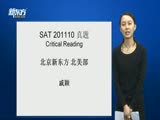2012年金融英语考试预测模拟试题及答案(10)
2012-04-12 17:51 作者: 来源:考试大 字号:T|T
Question1:
Answer:
This policy instruments refers to that a central bank intervenes and affects market interest rates and the money supply and money demand in the market by setting and changing discount rates on loans to commercial banks so that the amount of currency and loans available correspond to the needs of business. In different stages of business cycle, companies and enterprises may need more funds to expand the business, so they will go to banks for funds. If banks do not have enough funds, they will go to their central bank for loans. Usually loans to commercial banks by a central bank may take two forms. In one the borrowing institution may receive in advance, or loan secured by eligible paper it owns. In the second, the borrower may discount, or sell to the central bank, its eligible paper including treasury bills, promissory notes and bankers’ acceptances.
Discount policy was intended to work in the following fashion. If a central bank wanted to cool down an inflationary boom, it would raise the discount rate. An increase in the discount rate would lead to a general increase in interest rates for loans, decreasing the demand for short-term borrowing for additions to inventory and accounts receivable. This in turn would lead to postponing the building of new production facilities and, therefore, to a decreased demand for capital goods. As a consequence, the rate of increase in income would slow down. In time, income would decrease and with it the demand for consumer goods. Holders of inventories financed by borrowed funds would liquidate their stocks in an already weak market. The price drop would tend to stimulate the demand for, and reduce the supply of, goods. Thus, economic balance would be restored. A reduction in the discount rate was expected to have the opposite effect.
Question2:
Answer:
The Federal Reserve is the Treasury’s agent for the distribution of all government securities. The Fed holds vast quantities of Treasury securities that it sells if it believes that the money supply should be reduced. Similarly, the Fed will purchase Treasury securities if it believes that the money supply should be expanded. The Fed’s responsibility for the money supply makes it the single most influential participant in the U. S. money market. The Federal Reserve is a key (arguably the most important) participant in the money markets. The Federal Reserve holds T-bills (as well as T-notes and T-bonds) to conduct open market transactions— purchasing T-bills when it wants to increase the money supply, and selling T-bills when it wants to decrease the money supply. The Federal Reserve often uses repurchase agreements and reverses repos to temporarily smooth interest rates and the money supply. Moreover, the Fed targets the federal funds rate as part of its overall monetary policy strategy, which can in turn affect other money market rates. Finally, the Fed operates the discount window, which it can use to influence the supply of bank reserves to commercial banks and ultimately the demand for and supply of fed funds and repos.
Question3:
Answer:
Inflation is a phenomenon that appears repeatedly. Each time when inflation occurs, it shows different features, degrees and has different causes. So economists study inflation from different perspectives and thus there are diversifying standards for classification. The following are the main ones;
(1) According to the speed of price rise, there are creeping inflation, moderate inflation and galloping inflation
A. Creeping inflation refers to the case in which inflation rate is between 2% — 4% and is lower than economic growth rate. Most countries in the world have experienced such inflation once and it won’t cause serious economic disorder.
B. Moderate inflation refers to the case in which inflation rate is between 4% —9% and is lower than economic growth rate too.
C. Galloping inflation refers to double-digit inflation and its rate is higher than the economic growth rate. Such inflation occurs when the prices rise sharply and people are eager to spend their money since money is depreciating all the time and an economy is close to a halt.
(2) According to the expectation of inflation, there are expected inflation and
non-expected inflation.
A. Expected inflation
It refers to that when people anticipate inflation; they will take the prices of goods and services into consideration in their business accounting or daily life. For example, when the price level of a country rises by 6% year after year the people in this country would expect that the price level will continue to rise with the same proportion. So they will ask for a wage rise by 6%, banks will charge loan rate above 6% so on. Whether the expectation of inflation is exact or not it will cause a panic in markets and push up price level further. Thus expected inflation is a result of physiological expectation.
B. Non-expected inflation
It means that inflation occurs without the expectation of inflation or the price rise is beyond anticipation of inflation. For example the price rise of agricultural products caused by natural disasters can increase the prices of other goods related to the agricultural products.
(3) According to the ways inflation manifests itself, there are open inflation and hidden inflation
A. Open inflation manifests itself in the way of obvious price rise under the condition that market mechanism plays a full role without government intervention.
B. Hidden inflation is the one that manifests itself in the way of non-price rise, such as goods shortage, market slump and so on. When there is too much money in circulation, a national government would suppress the price rise by administrative means, such as price subsidies, rationing of goods in great needs and so on. So market prices won’t show wide fluctuation. Meanwhile, money in circulation has not decreased, over-demands have not been suppressed. This kind of inflation occurs in the country or area where there is a planned economy, like the case in China before the reform of its price system.
(4) According to the causes of inflation, there are demand pull inflation, cost push inflation, hybrid inflation, and structural inflation and so on. Demand pulls inflation.
The process in which a continuous increase in the aggregate demand above the aggregate supply pulls the price level continuously is called demand-pull inflation. In other word, it is too much money chasing too few goods so money depreciates, and price level rises.
Question4:
Answer:
We can get analytical conclusions about the main western theories of money demand:
(1) Fisher developed a monetary theory based on transactions and pays attention to the quantity of money used by the public and the velocity of money. In his view, the demand for money balance has a direct ratio to income and is not sensitive to interest rates. Apart from that the velocity of money is constant and the quantity of money determines price level of goods and further spending. Fisher’s equation takes one-sided approach in stressing the leading role of money when analyzing the relationship between money movement and commodity movement and explaining changes of business cycles with the changes of money quantity. In fact, the movement of commodity should be in a leading position. There will be no money movement without commodity movement.
(2) The Cambridge School stresses money’s function of store of value and regards the demand for money as a means of storing wealth and tries to answer how much money individuals should hold. As for the relationship between the demands for real money and the real income, this approach is similar to Fisher’s approach except for the fact that it takes into consideration of impact of interest rates on money demand. This approach pays attention to the choice of assets, i. e., the comparison between the cost of holding money and the degree of satisfaction, and emphasizes such psychological factors as people’s will and expectation, which is the original motive of demand. So this approach is more suitable to economic society in reality than Fisher’s approach and therefore is an academic breakthrough.
(3) Keynes’s approach deepens Cambridge analysis on the holding of money by micro-entities. He divided motives of the demand for money into three; transactions motives, precautionary motives and speculative motives. Keynes held that the demand for money is changeable because the impact of changing income and interest rates, which will lead to the change of the velocity of money. When income remains unchanged, the velocity of money slows down if the demand for money increases and people hold more money. The realization of the same income will need more money, thus the demand for money will increase. The successors of Keynes provide more reasonable and accurate base for the three motives of holding money. They hold that transactions and precautionary demand for money is also sensitive to interest rates.
(4) Milton Friedman adopts Cambridge and Keynes’s tradition of regarding money as an asset in his analysis and holds that the demand for money is stable and is determined by permanent income and the rate of return of non-money assets. In his view, the velocity of money can be predicated though it is not constant which in turn results in the conclusion of the quantity theory of money demand that spending is determined mainly by money.
(5) The view that the velocity of money is constant held by traditional quantity theory of demand is not true to the reality. Velocity of money is closely related to the demand for money. The velocity of money is the variable that links a nation’s money supply to its GDP. Factors that increase the demand for money reduce velocity, while factors that reduce the demand for money increase velocity. As a matter of fact, the velocity of money changes from time to time, particularly,during economic crisis,in which the velocity of money falls drastically. Monetarists think that money growth dominates GDP expenditures because they believe that demand for money is stable and predictable while Keynesians are generally skeptical of this proposition.
更多 行业英语 文章推荐
2012年金融英语考试预测 2012年金融英语考试试题及答案 金融英语考试模拟试题 相关文章导读
- 2012-04-062012年金融英语考试模拟试题
更多关于 的新闻
版权及免责声明
① 凡本网注明"稿件来源:新东方"的所有文字、图片和音视频稿件,版权均属新东方教育科技集团(含本网和新东方网)所有,任何媒体、网站或个人未经本网协议授权不得转载、链接、转贴或以其他任何方式复制、发表。已经本网协议授权的媒体、网站,在下载使用时必须注明"稿件来源:新东方",违者本网将依法追究法律责任。
② 本网未注明"稿件来源:新东方"的文/图等稿件均为转载稿,本网转载仅基于传递更多信息之目的,并不意味着赞同转载稿的观点或证实其内容的真实性。如其他媒体、网站或个人从本网下载使用,必须保留本网注明的"稿件来源",并自负版权等法律责任。如擅自篡改为"稿件来源:新东方",本网将依法追究法律责任。
③ 如本网转载稿涉及版权等问题,请作者见稿后在两周内速来电与新东方网联系,电话:010-60908555。







